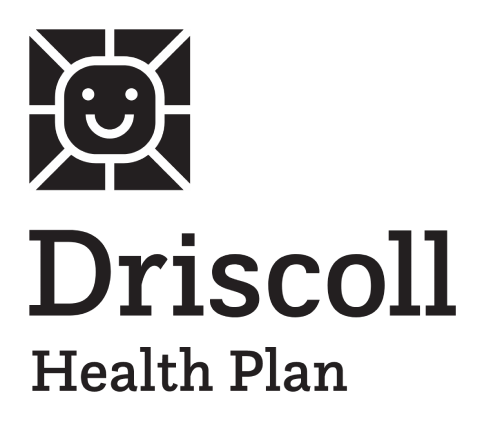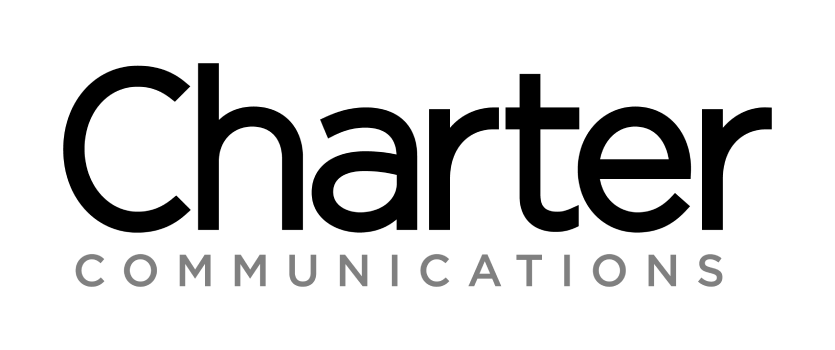Ending child sexual abuse in Texas.
It's time to empower our communities to protect children from child sexual abuse. Together, we can end such abuse.
Child Sexual Abuse is Preventable
Shifting public perception is the key to protecting children.

Child sexual abuse is clouded by misconceptions — the most harmful of which is that it cannot be prevented. In fact, child sexual abuse is an aspect of public health that we have the power to change.
Rather than acting through the criminal justice system only after a child has suffered harm, we envision a Texas in which child sexual abuse does not occur in the first place. Here’s what we know.
Ending Child Sexual Abuse in Texas Matters
Child sexual abuse is prevalent, and our child population is growing.

Today in Texas, child sexual abuse is all too common — it can happen in all zip codes, all income brackets, and across all cultural, ethnic, and racial demographics — and nearly half of these incidents go unreported.
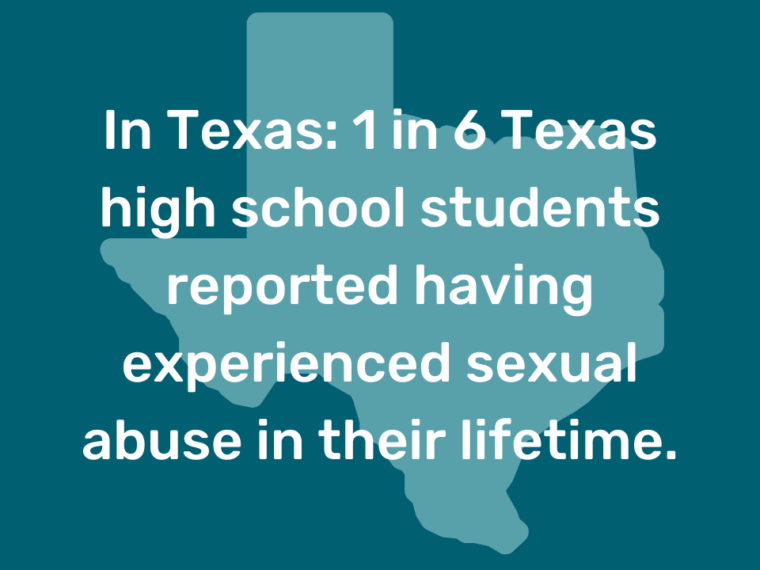
1 in 6 Texas high school students reported having experienced sexual abuse in their liefetime.
Alarmingly, more children are impacted by sexual abuse than childhood cancer, which impacts 1 in 285 children before their 20th birthday.
7x Faster Growth
By 2050, the Texas child population is expected to grow 7 times faster than the national child population. Unless measures are taken to protect children, as the child population grows, so will occurrences of child sexual abuse.
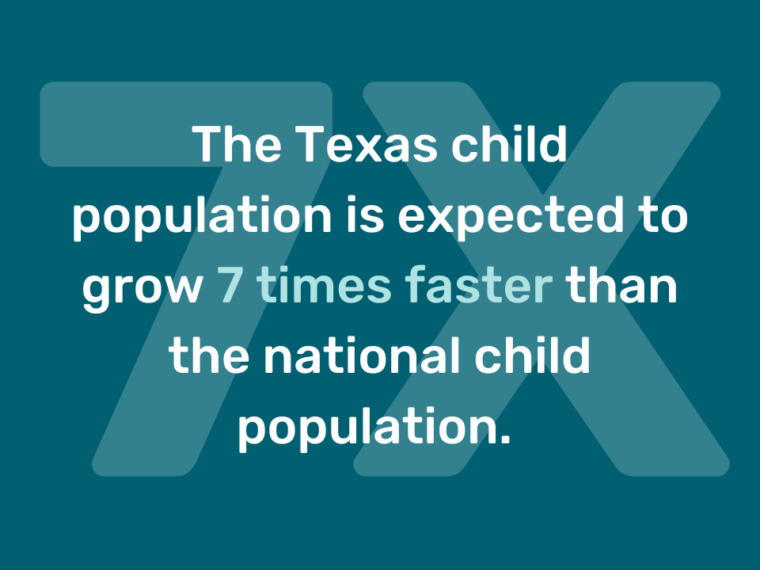

10% of the country’s children live in Texas.
Ending child sexual abuse in Texas will inevitably translate to other states, ultimately improving outcomes for children across the country.
3 out of 5 children never disclose sexual abuse.
Three out of five children never tell someone that they have been sexually abused. Most children are unlikely to disclose sexual abuse to an adult, and a low percentage of all incidents are ultimately reported to authorities.


Child Sexual Abuse Has Long-Lasting Effects
Child sexual abuse is an Adverse Childhood Experience (ACE) that can have lifelong consequences for the health and well-being of survivors well into adulthood. Lifelong impacts include increased risks for:
Mental Health Challenges
- Post-traumatic stress
- Anxiety
- Depression
- Suicide
Physical Health Challenges
- Diabetes
- Cancer
- Heart problems
- Stroke
- Hypertension
Despite the trauma child sexual abuse brings, children remain unlikely to disclose such abuse to an adult. Until we make meaningful changes, thousands of children will continue to carry the weight of sexual abuse without support.
Child Sexual Abuse is Costly for Everyone
Child sexual abuse impacts the quality of life for all Texans — even those who have not experienced it. The prevalence of child sexual abuse in Texas leads to higher rates of:
- Substance abuse and teen pregnancy
- Unemployment, reduced productivity, and lost income
- Criminal justice, child welfare, and healthcare costs
Taxpayers bear the economic burdens of child sexual abuse to the tune of billions of dollars spent annually. Prevention is a better use of taxpayer dollars than any attempt to mitigate the individual and societal harm child sexual abuse causes.

Learn About Prevention
Go beyond misconceptions to improve public health.
Child sexual abuse prevention in Texas starts with raising public awareness about the real issues and actions communities can take to protect vulnerable children. Understanding child sexual abuse empowers communities and helps break down misconceptions that hinder effective prevention efforts, leading to the over-allocation of resources to post-abuse strategies.
For example, it is often assumed that strangers predominantly commit acts of child sexual abuse. In reality, many cases involve individuals that a child knows and trusts, including family members, friends, or acquaintances.
Dispelling this misconception is crucial to prevention efforts, highlighting the need to teach children and adults the importance of open communication, establishing healthy boundaries, identifying inappropriate behavior, and the importance of children reporting sexual abuse to a safe and trusted adult, regardless of the perpetrator’s identity.
Detecting Child Sexual Abuse
The signs of child sexual abuse can be subtle.
Child sexual abuse is not easily identifiable and can happen without visible signs or physical force. It often involves manipulation, coercion, and grooming, making it hard for children and adults to recognize.
Dispelling misconceptions is crucial for communities to recognize the subtle signs, enabling early intervention and prevention. We’re working to empower communities to break the cycle, identify warning signs, and take effective actions when possible abuse is detected.
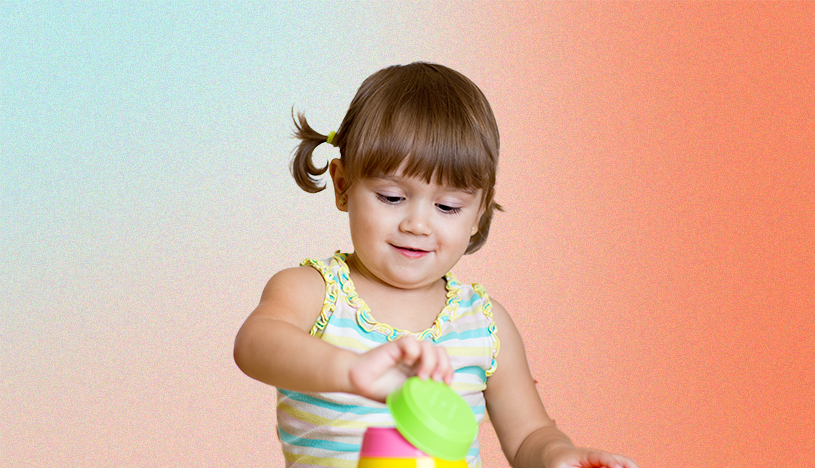
Reporting Abuse is Critical
When child sexual abuse happens, action is necessary.
Child sexual abuse often goes unreported because child victims fear they won’t be believed. Fearing potential repercussions, they suffer self-blame, guilt, and shame in silence. When children do disclose sexual abuse, they often confide in peers who cannot report it.
Unfortunately, abused children aren’t completely wrong in their assumptions. Adults such as teachers, doctors, coaches, and faith leaders often lack the knowledge to recognize signs of abuse. They may not know how to readily address such abuse when it is reported to them. We can change this.

70% of girls who experienced sexual abuse or sexual assault during childhood, 70% of the incidents were at the hands of another child or teen, usually a male.
98% of children who received specialized treatment for problematic sexual behavior had not re-engaged in the behavior within 10 years of completing treatment.
1/3 but possibly as many as 1/2 of cases of child sexual abuse are committed by another child or youth.
Building a Preventive Action Plan
Our initiative to end child sexual abuse is well underway.
Our understanding of the prevalence, individual impacts, societal costs, and common misconceptions of child sexual abuse make our priorities clear. We are leading the way by:
- Research. Funding research to further understand child sexual abuse to inform prevention strategies for Texas communities,
- Child-centered resources. Developing educational materials aimed at informing children, parents, caregivers, and communities about abuse prevention and the support available for victims,
- Adult education. Supporting specialized education for adults at Texas schools, community centers, and faith-based organizations around child sexual abuse,
- Public Awareness. Promoting collaboration among systems and individuals to advance prevention messaging and drive action,
- Victim support. Connecting child victims and families with our justice and healing services through the nearest CAC in the event of abuse.



